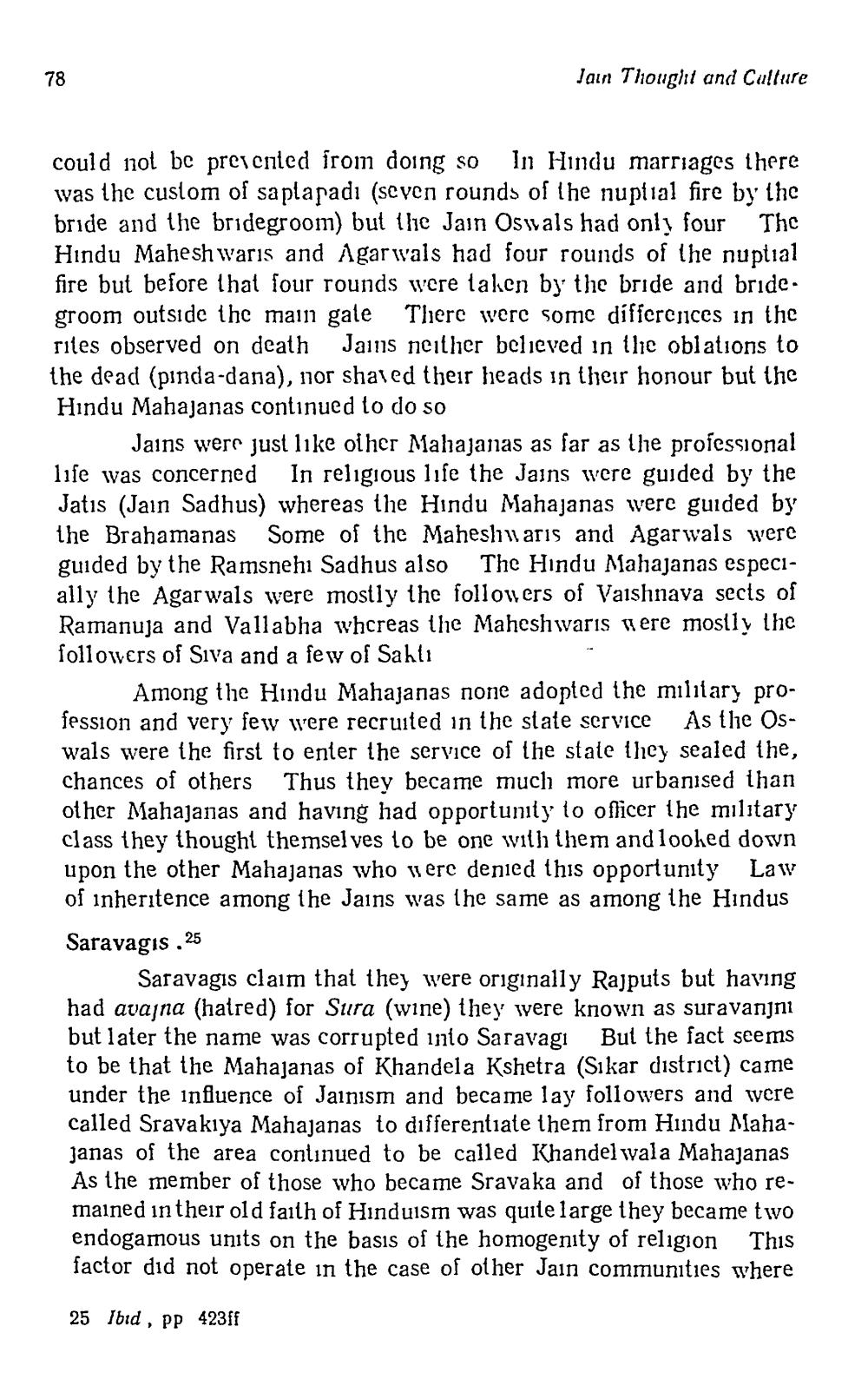________________
78
Jain Thought and Culture
could not be presented from doing so In Hindu marriages there was the custom of saplanadi (scyen rounds of the nuptial fire by the bride and the bridegroom) but the Jain Oswals had only four The Hindu Maheshwaris and Agarwals had four rounds of the nuptial fire but before that four rounds were taken by the bride and bride. groom outside the main gate There were some differcices in the rites observed on death Janis neither believed in thic oblations to the dead (pinda-dana), 11or shared their heads in their honour but the Hindu Mahajanas continued to do so
Jains were just like olher Mahajanas as far as the professional life was concerned In religious life the Jains were guided by the Jatis (Jain Sadhus) whereas the Hindu Mahajanas were guided by the Brahamanas Some of the Maheshwaris and Agarwals were guided by the Ramsnehi Sadhus also The Hindu Mahajanas especially the Agarwals were mostly the followers of Vaishnava sects of Ramanuja and Vallabha whcreas the Maheshwaris were mostly the followers of Siva and a few of Sahtı
Among the Hindu Mahajanas none adopted the military profession and very few were recruited in the state service As the Oswals were the first to enter the service of the state they sealed the, chances of others Thus they became much more urbanised than other Mahajanas and having had opportunity to officer the military class they thought themselves to be one with them and looked down upon the other Mahajanas who were denied this opportunity Law of inheritence among the Jains was the same as among the Hindus Saravagis . 25
Saravagis claim that they were originally Rajputs but having had avajna (hatred) for Sura (wine) they were known as suravanjni but later the name was corrupted into Saravagi But the fact seems to be that the Mahajanas of Khandela Kshetra (Sikar district) came under the influence of Jainism and became lay followers and were called Sravakiya Mahajanas to differentiate them from Hindu Mahajanas of the area continued to be called Khandel wala Mahajanas As the member of those who became Sravaka and of those who remained in their old faith of Hinduism was quite large they became two endogamous units on the basis of the homogenity of religion This factor did not operate in the case of other Jain communities where
25
Ibid, PP 423ff




